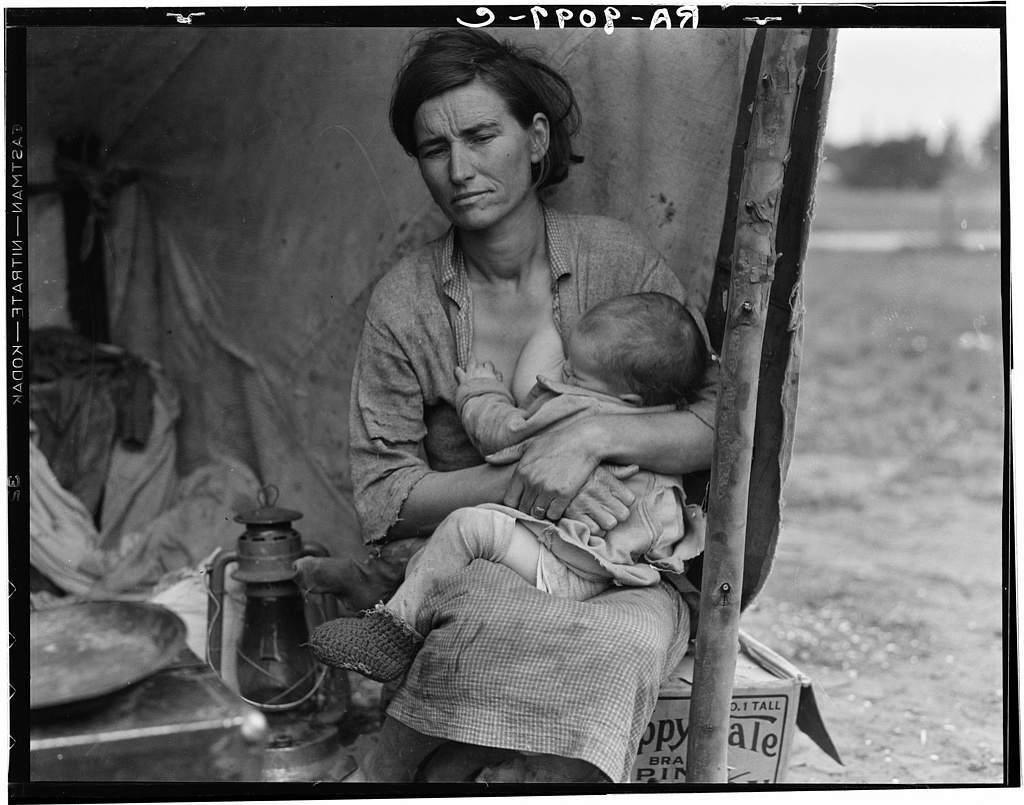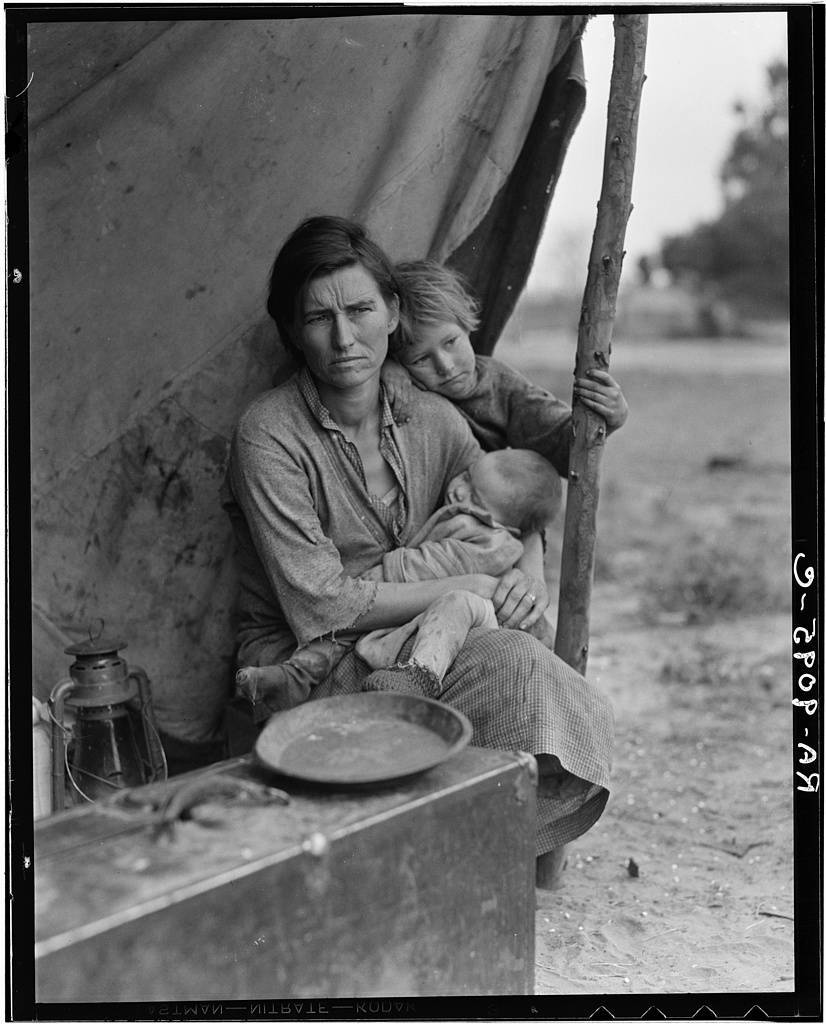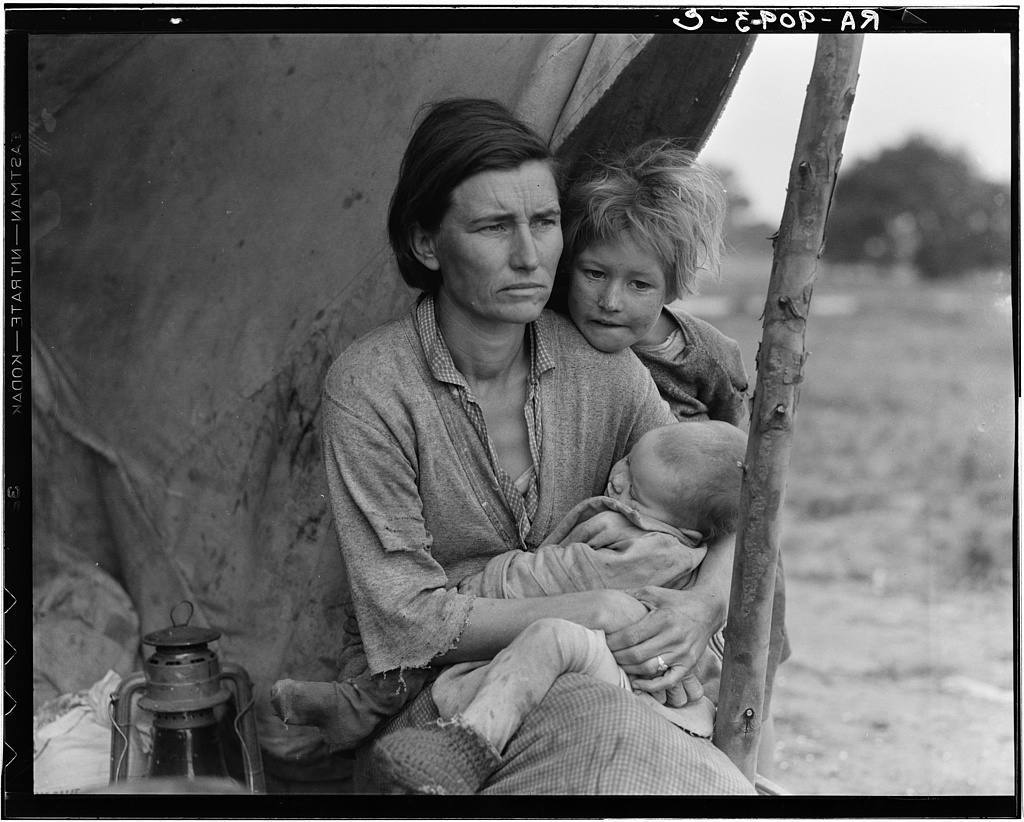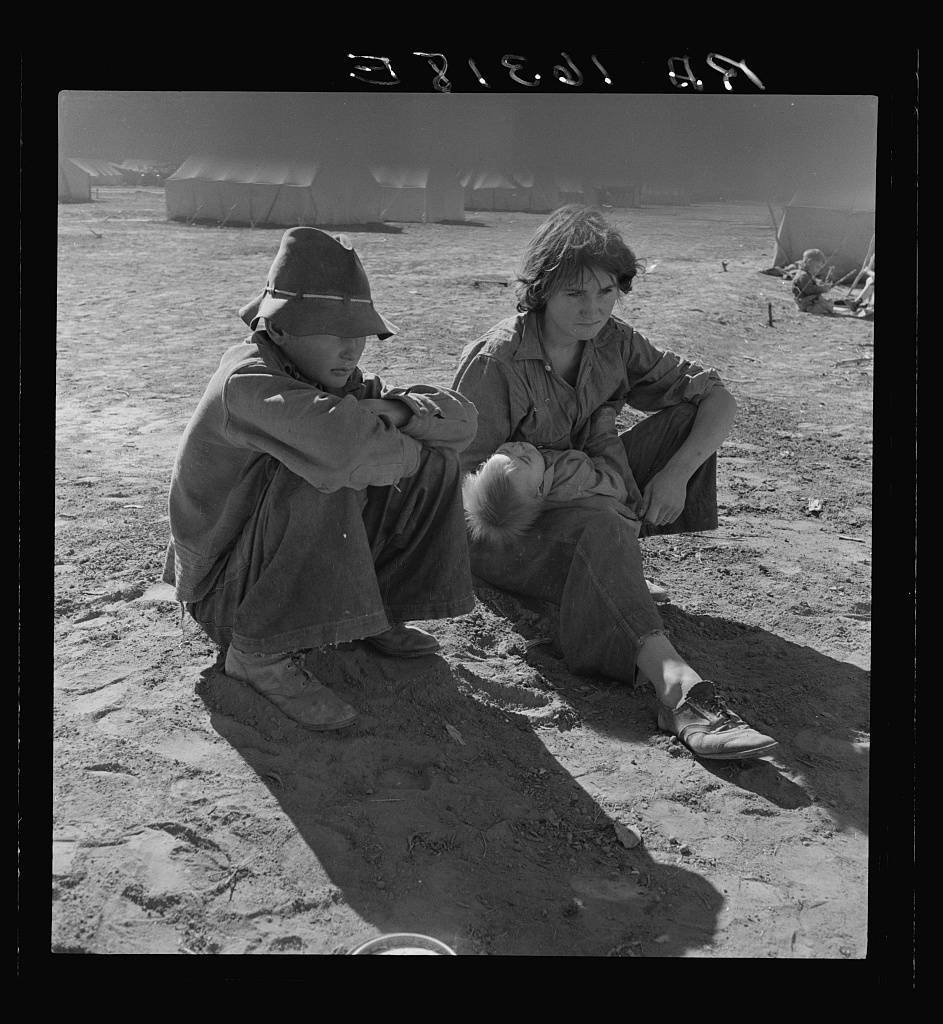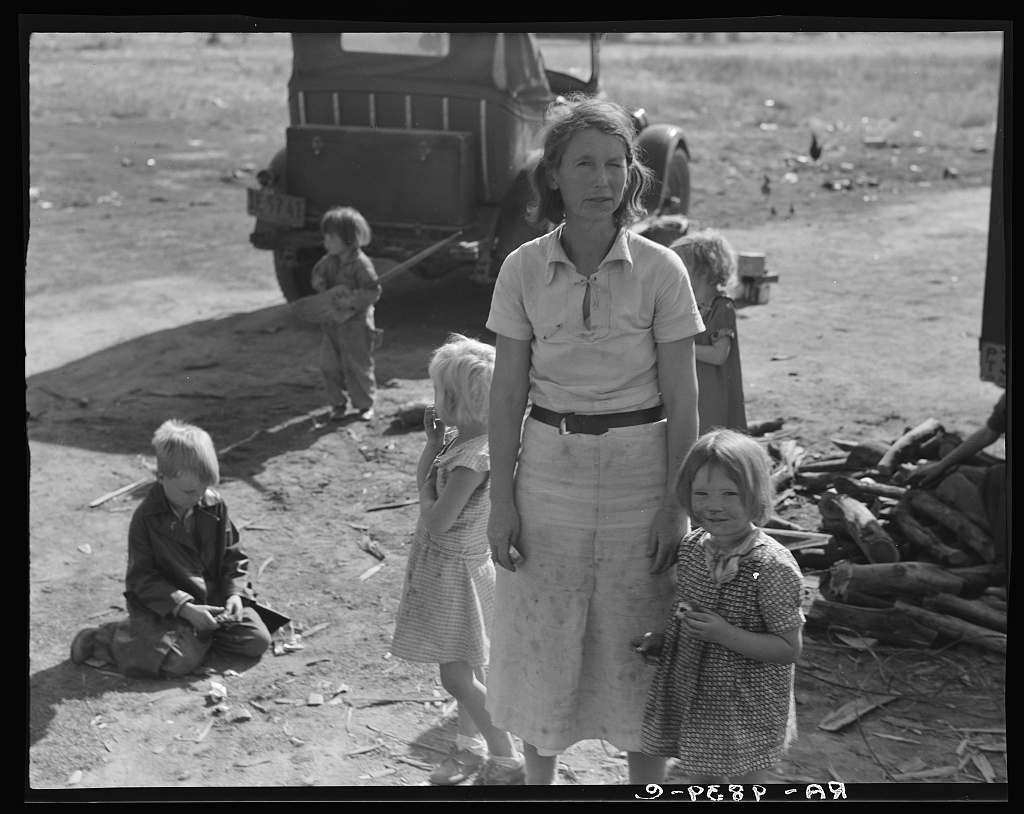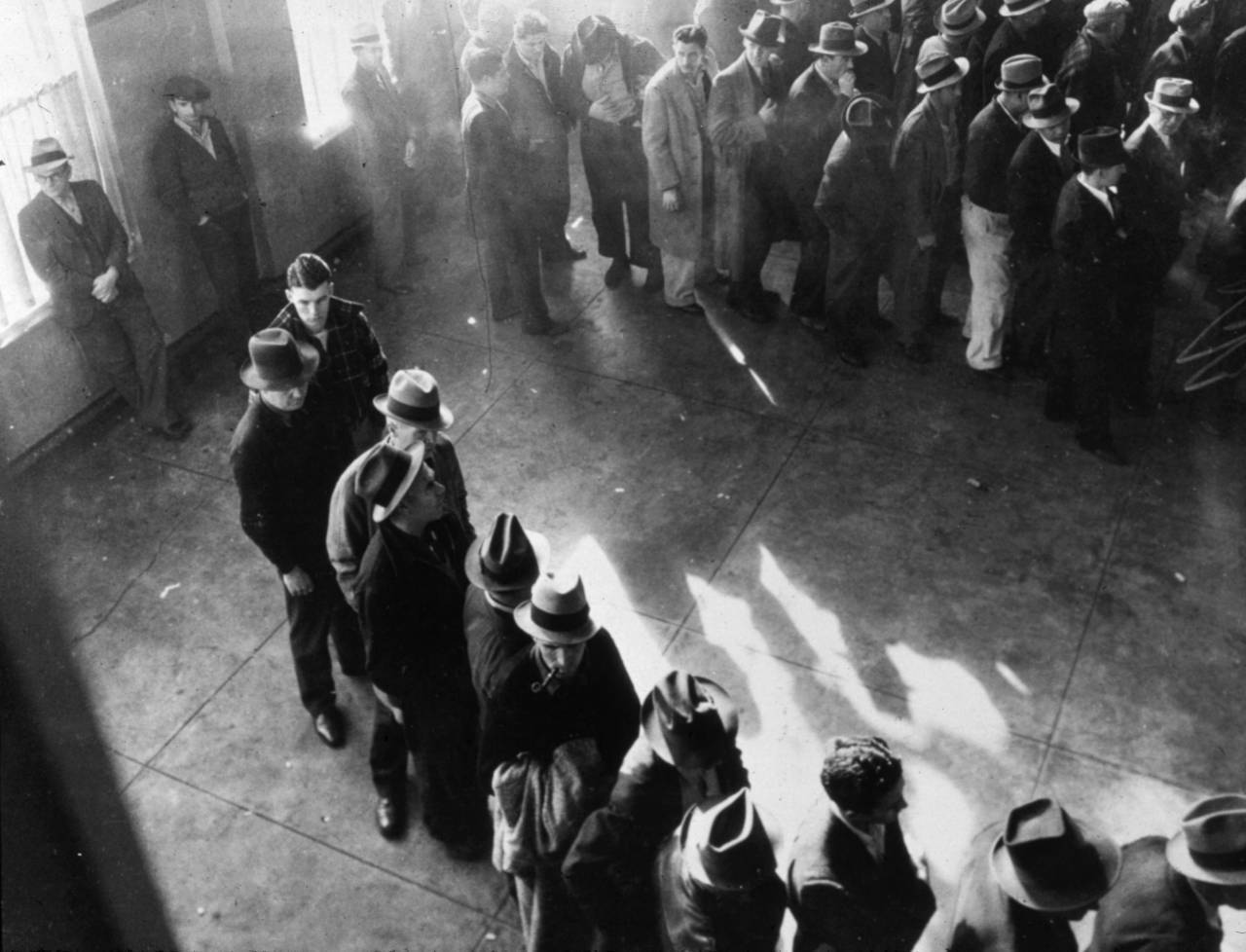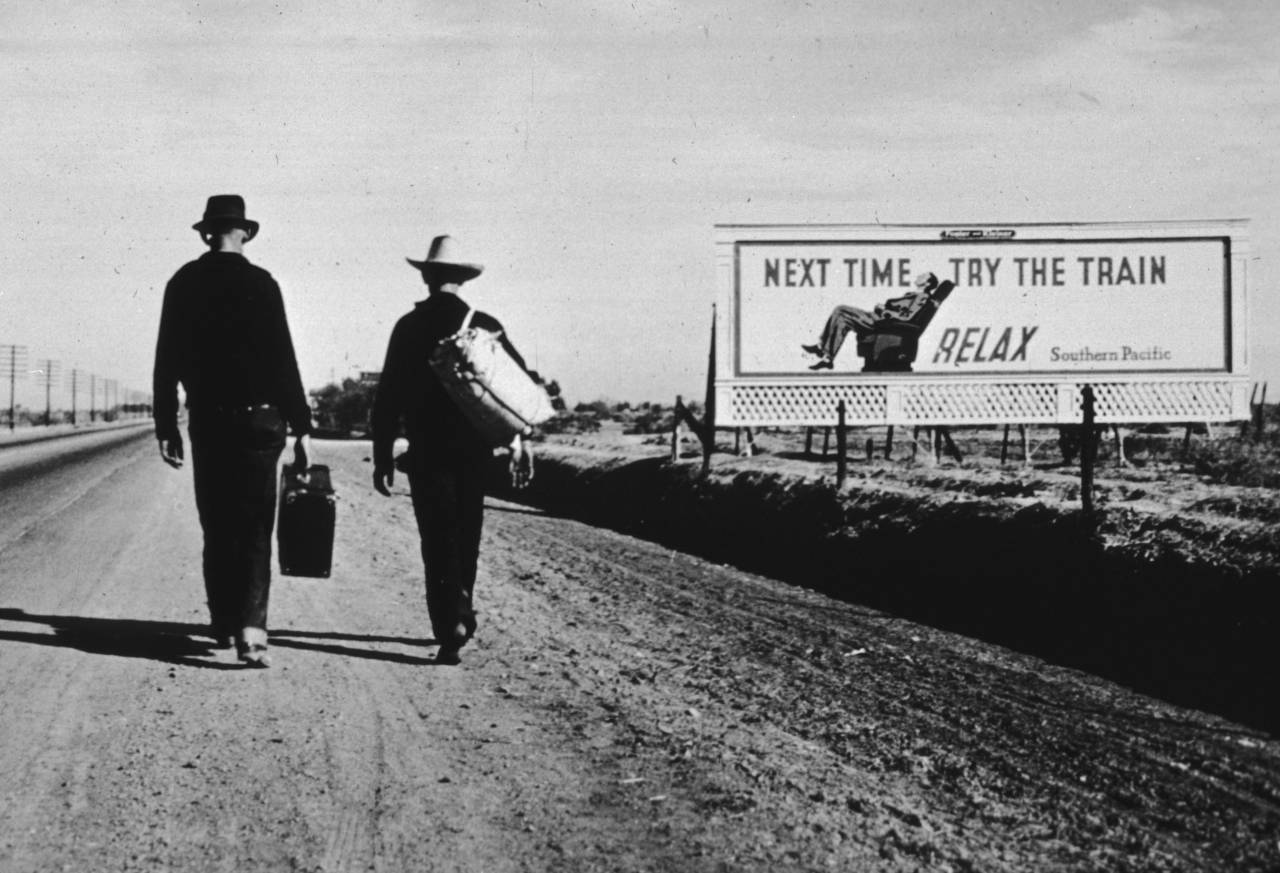Dorothea Lange (1895-1965) was commissioned by the US Farm Security Administration to document the lives of farming families during the 1930s Great Depression. Her stirring photographs broadcast the sharecroppers’ struggle to survive as crop prices crashed and their jobs vanished.
Here subjects were tough, dry-eyed, desperate, resilient, poor, beguiling, inculpable, stoic, hard-working, alive and unforgettable.
Through Lange the Dust Bowl was given a human face. The message was plain: these people were worth saving. These people were made of the very stuff that had built America. They could be you…
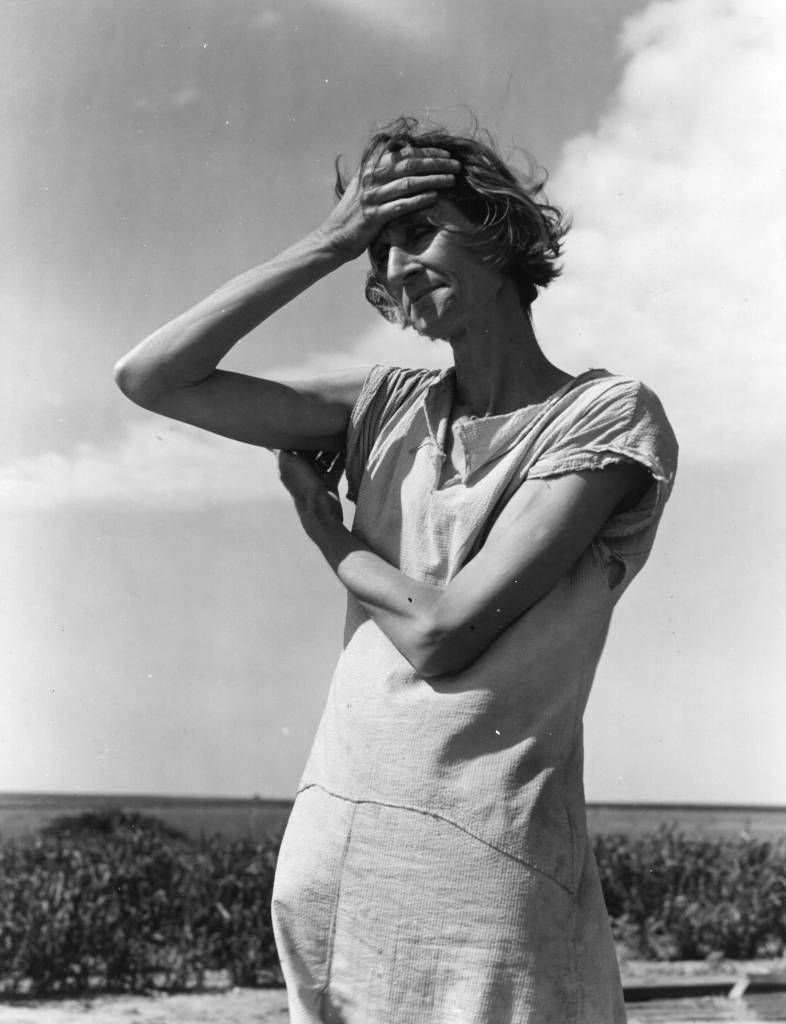
The wife of a migratory labourer with three children in Texas during the Depression. 1932 (Photo by Dorothea Lange/Getty Images)
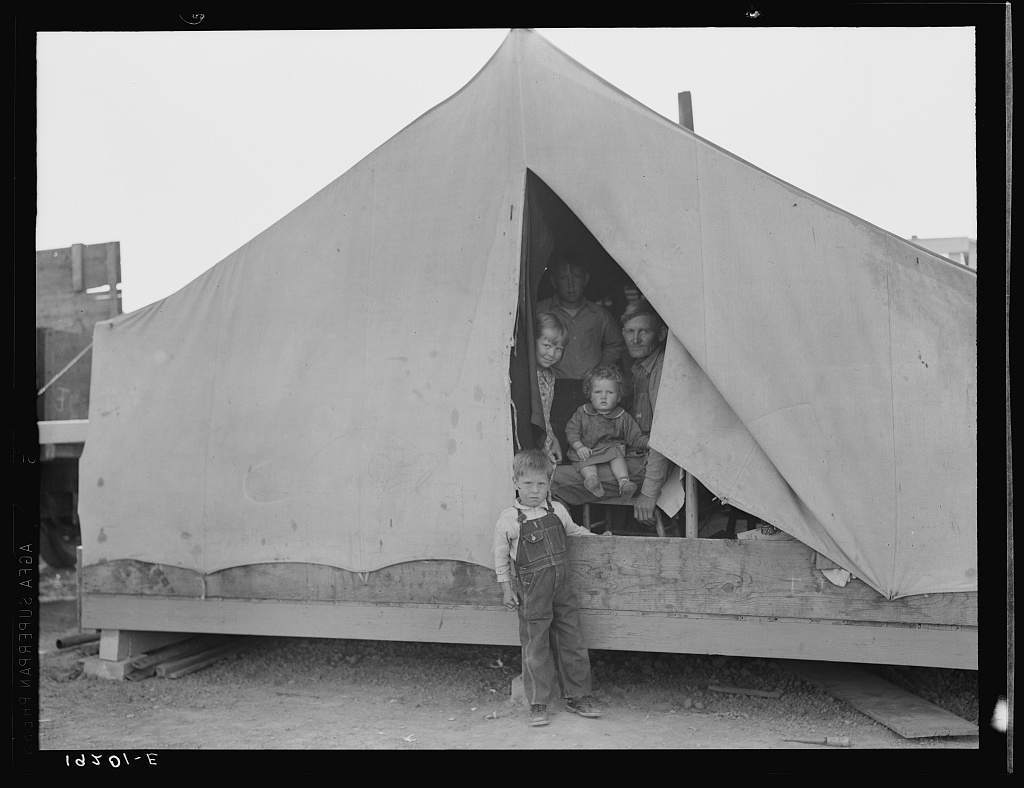
Brawley, Imperial Valley. In Farm Security Administration (FSA) migratory labor camp. Family of mother, father and eleven children, originally from near Mangrum, Oklahoma, where he had been tenant farmer. Came to California in 1936 after the drought. Since then has been traveling from crop to crop in California, following the harvest. Six of the eleven children attend school wherever the family stops long enough. Five older children work along with the father and mother. February 23, two of the family have been lucky and “got a place” (a day’s work) in the peas on the Sinclair ranch. Father had earned about one dollar and seventy-three cents for ten-hour day. Oldest daughter had earned one dollar and twenty-five cents. Form these earnings had to provide their transportation to the fields twenty miles away. Mother wants to return to Oklahoma, father unwilling.She says, “I want to go back to where we can live happym live decent, and grow what we eat.” He says, “We can’t go the way I am now. We’ve got nothing in the world to farm with. I made my mistake when I came out here.”

A man waiting at a breadline in San Francisco during the Winter of 1933. (Photo by Dorothea Lange/National Archive/Newsmakers)
PBS:
In the midst of the Great Depression, Lange brought her large Graflex camera out of the studio and onto the streets. Her photos of the homeless and unemployed in San Francisco’s breadlines, labor demonstrations, and soup kitchens led to a job with the FSA. From 1935 to 1939, Lange’s arresting FSA images—drawing upon her strength as a portrait photographer—brought the plight of the nation’s poor and forgotten peoples, especially sharecroppers, displaced families, and migrant workers, into the public eye. Her image “Migrant Mother” is arguably the best-known documentary photograph of the 20th century and has become a symbol of resilience in the face of adversity.
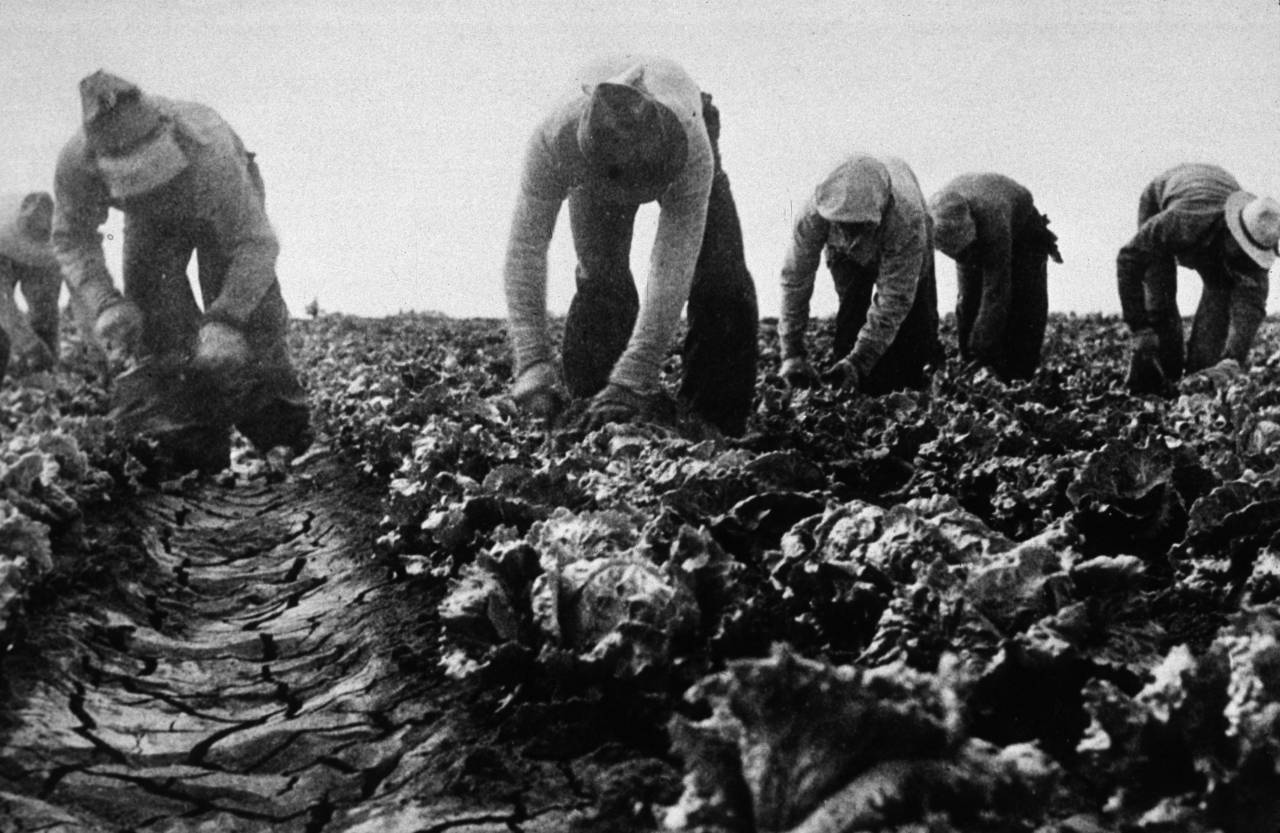
A group of people cutting lettuce in Salinas, California. 1935 (Photo by Dorothea Lange/Getty Images)
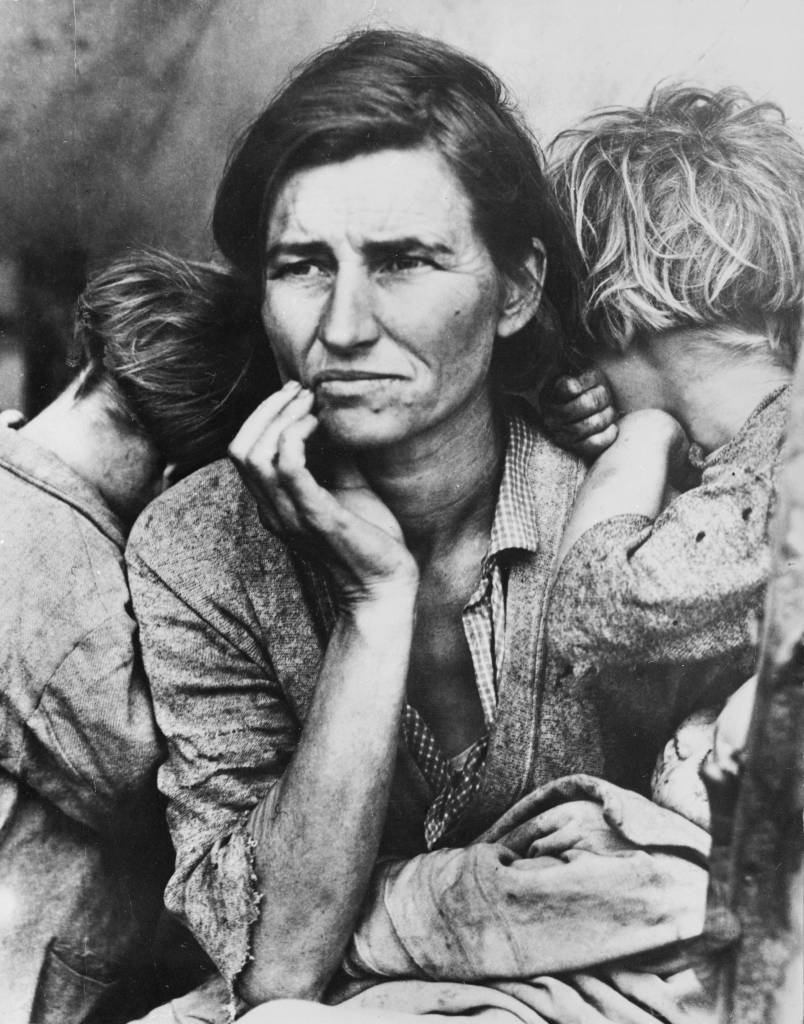
Florence Thompson, a migrant mother with three of her seven children at a farm workers’ camp in Nipomo, California. 1936 (Photo by Dorothea Lange/Getty Images)
Florence was just 32. She had seven hungry children. The father was a native Californian. The family were destitute, living in a pea pickers’ camp at Nipomo, California, because of the failure of the early pea crop. They had just sold their tent in order to buy food. In all there were around twenty-five hundred people in this camp. Most of them were destitute

Migratory boy in squatter camp. Has come to Yakima Valley for the third year to pick hops. Mother: “You’d be surprised what that boy can pick.” Washington, Yakima Valley
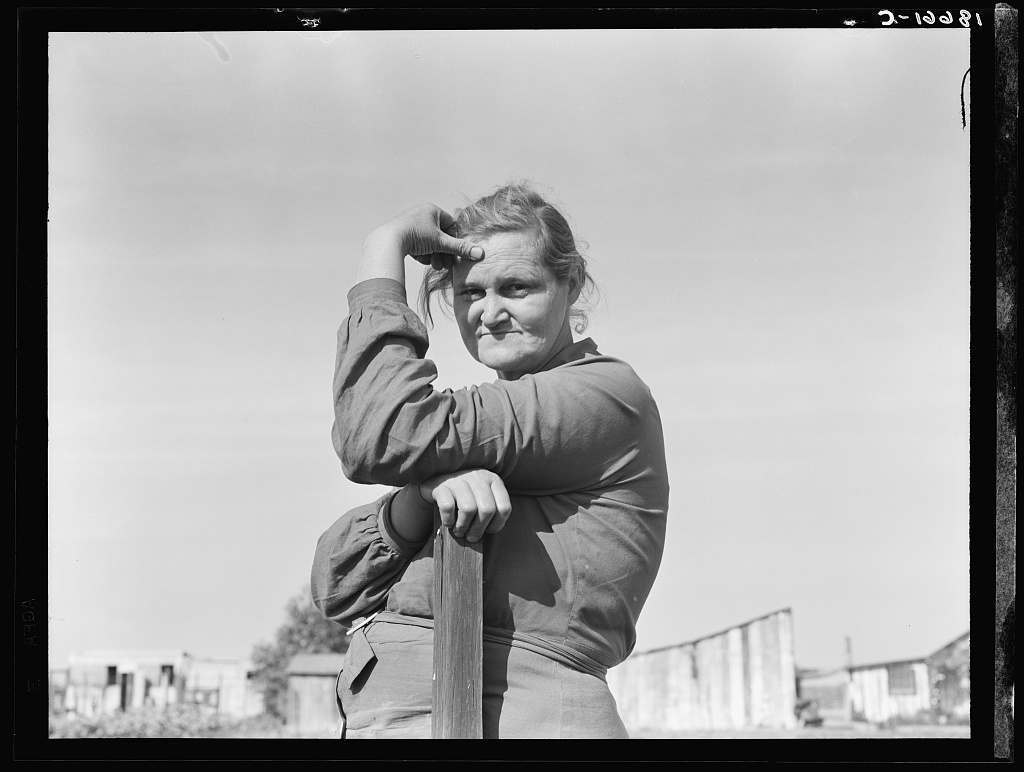
Arkansas mother come to California for a new start, with husband and eleven children. Now a rural rehabilitation client. Tulare County, California
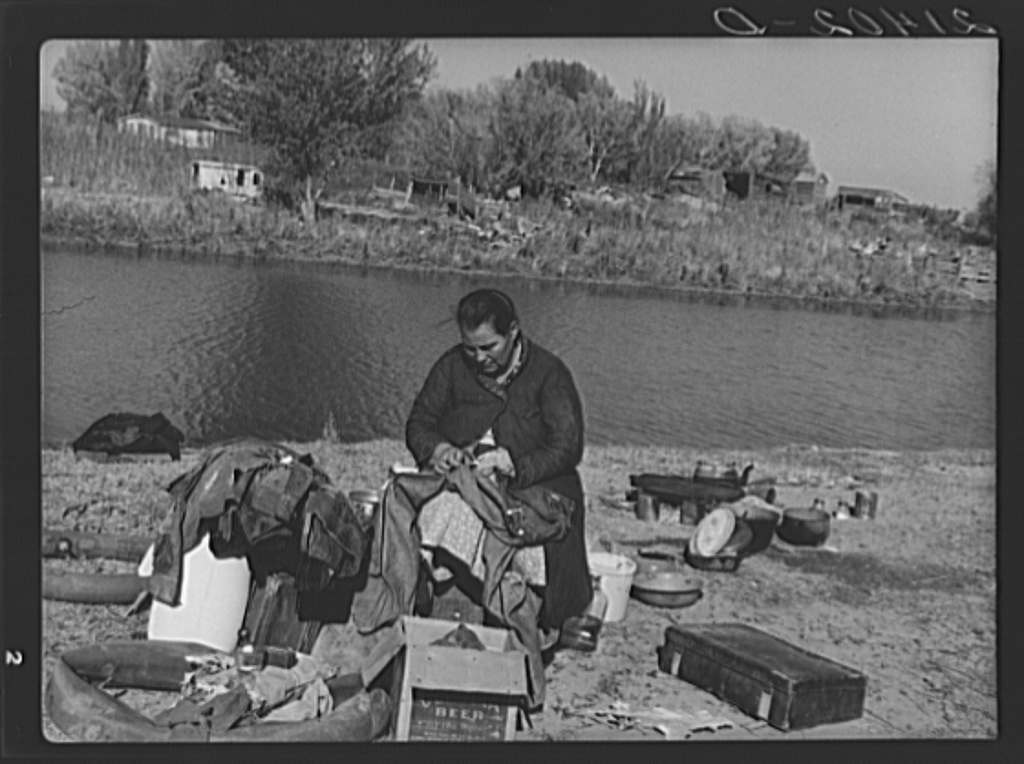
Mother of migrant family sewing. Near Vale, Malheur County, Oregon
Creator(s): Lange, Dorothea, photographer
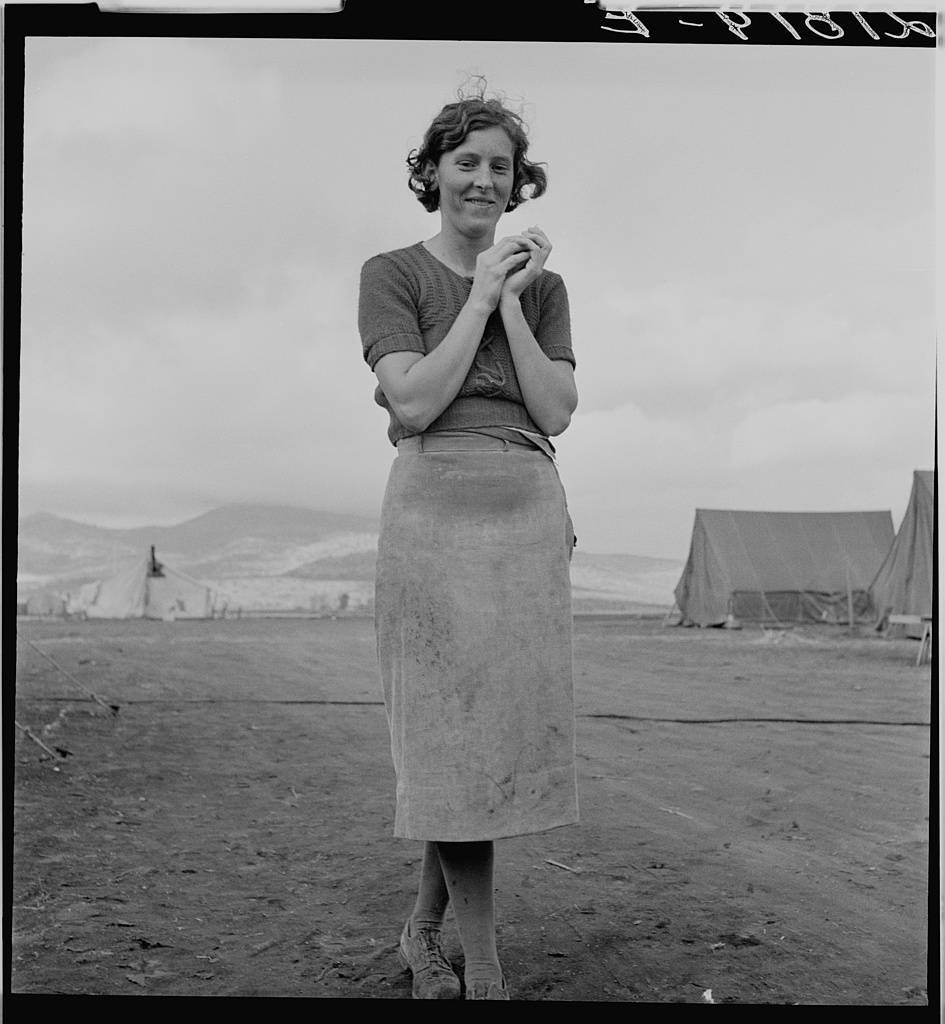
Young migrant mother has just finished washing. Merrill FSA (Farm Security Administration) camp, Klamath County, Oregon. 1939

Young family, penniless, hitchhiking on U.S. Highway 99 in California. The father, twenty-four, and the mother, seventeen, came from Winston-Salem, North Carolina. Early in 1935, their baby was born in the Imperial Valley, California, where they were working as field laborers
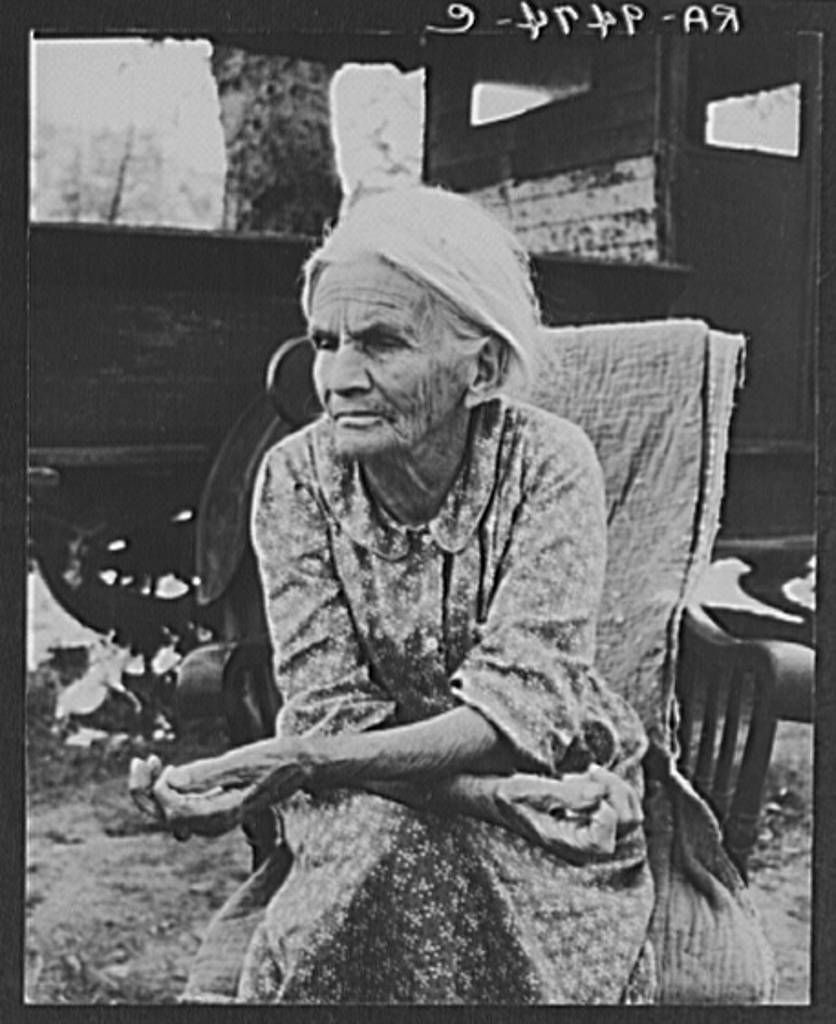
Mother of family camped near a creek bed, panning for gold. “Slept in a bed all my life long till now–sleeping on the ground.” Near Redding, California
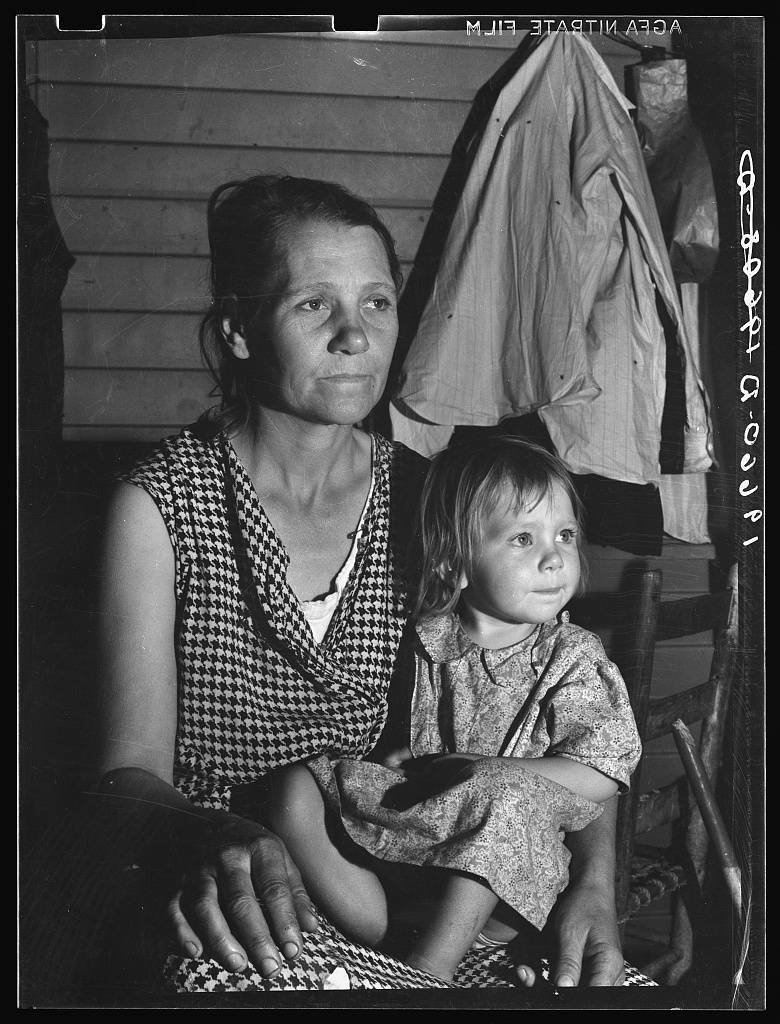
Tulare County. Farm Security Administration camp (FSA) for migratory agricultural workers at Farmersville. Mother and child, come to California from Oklahoma. They have six children, aged two to nineteen years. The mother finished the eighth grade in school. They left their farming in Chicasha in the fall of 1936 to go to Arizona to pick cotton. They returned to Oklahoma to try again; failed and re-entered California February 27, 1938 to pick peas under a labor contractor. The father is chairman of camp council

Over this bridge drought refugees are crossing the Colorado River into California. U.S. 80 / Dorothea Lange, 1935.
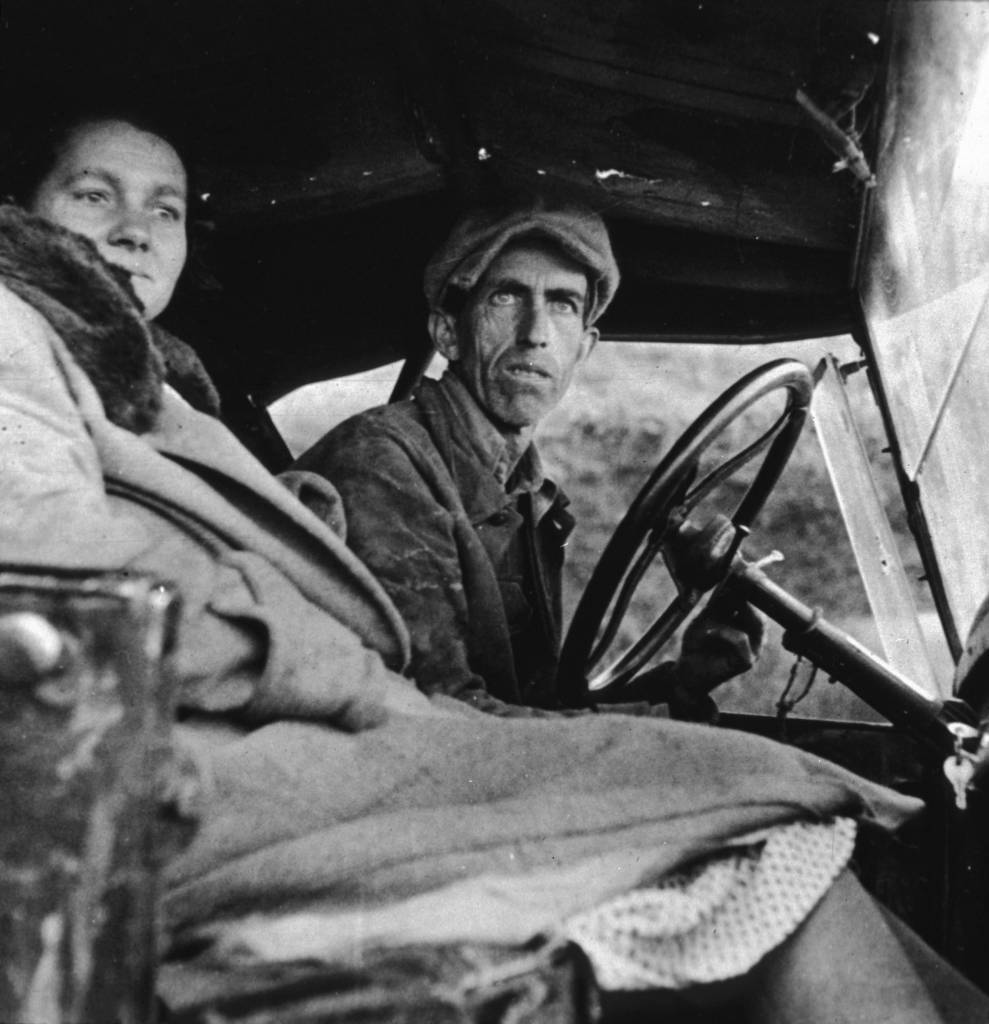
A former Missouri farmer and his wife, now working as farm labourers, in California. 1936 (Photo by Dorothea Lange/Getty Images)

Toll of Uncertainty: A mother in California who with her husband and her two children will be returned to Oklahoma by the Relief Administration. This family had lost a two-year-old baby during the winter as a result of exposure.
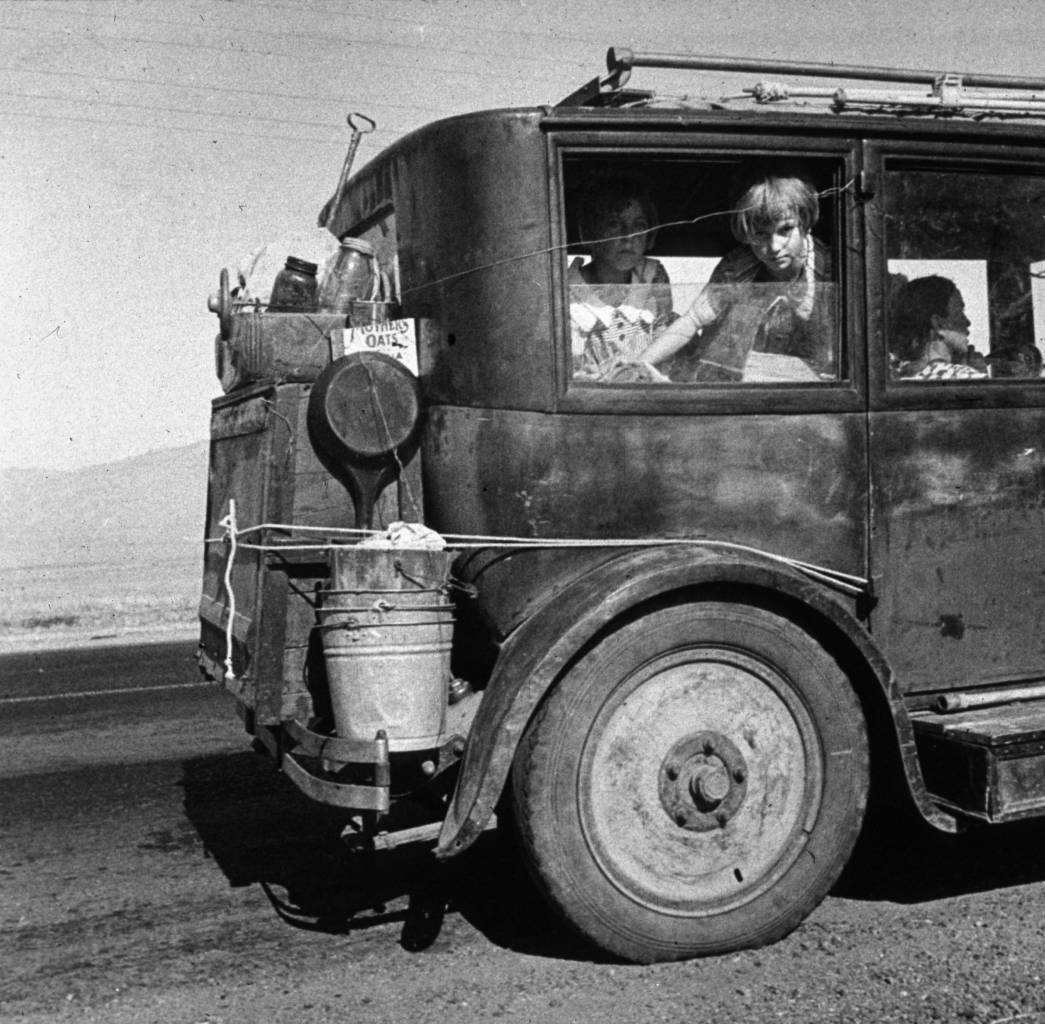
A family of drought refugees from Abilene, Texas, on the road in California, where they are trying to find work. 1936 (Photo by Dorothea Lange/Getty Images)
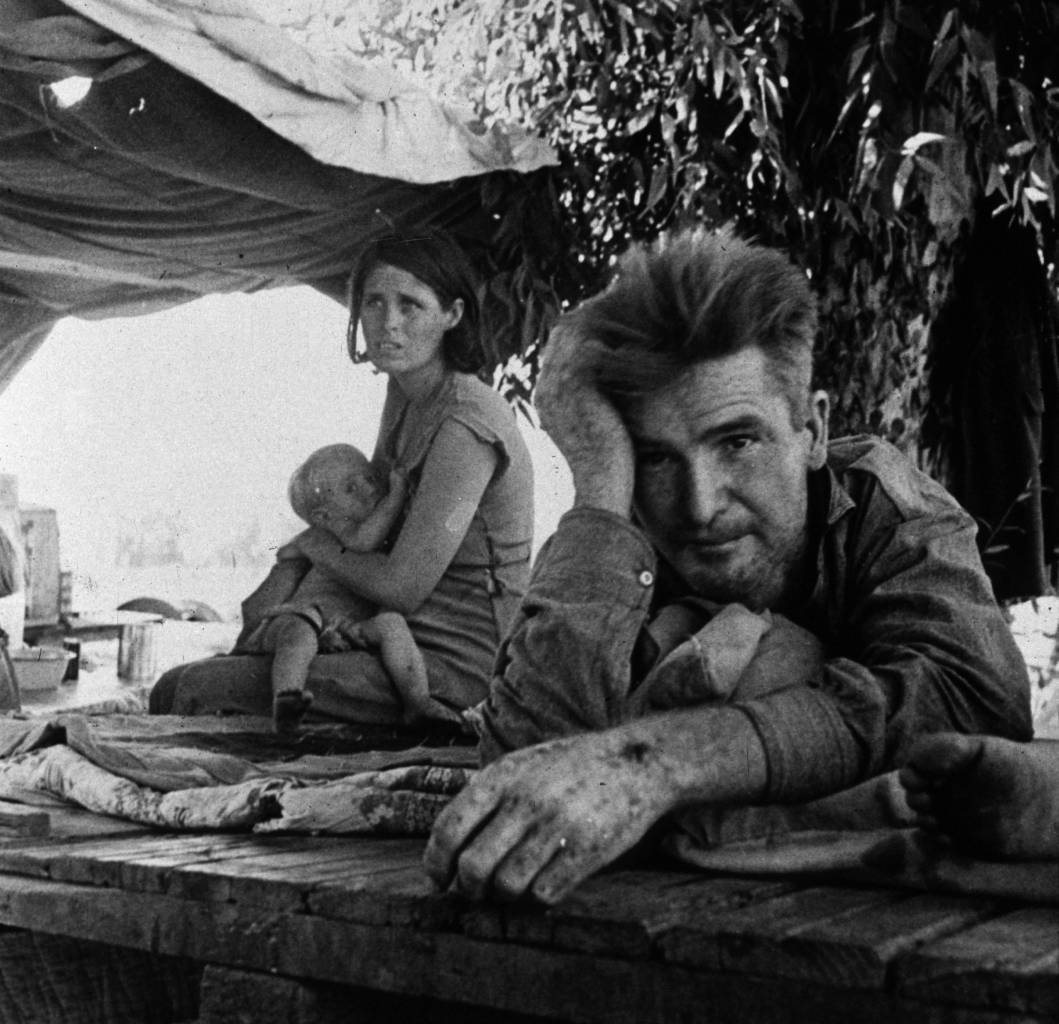
A family of migrant workers fleeing from the drought in Oklahoma camp by the roadside in Blythe, California. 1936 (Photo by Dorothea Lange/Getty Images)
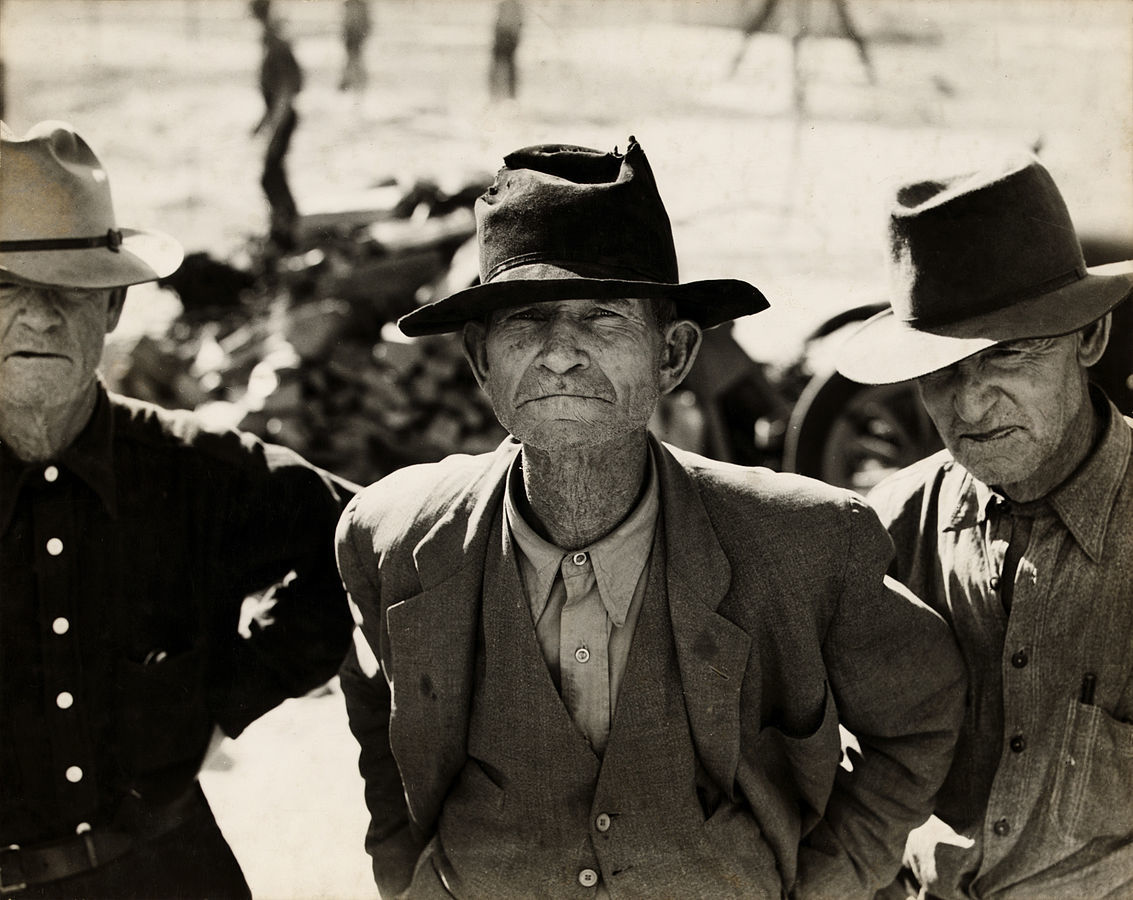
Dorothea Lange, Ex-tenant farmer on relief grant in the Imperial Valley, California, 1937.jpg
More details
Ex-tenant farmer on relief grant in the Imperial Valley, California.
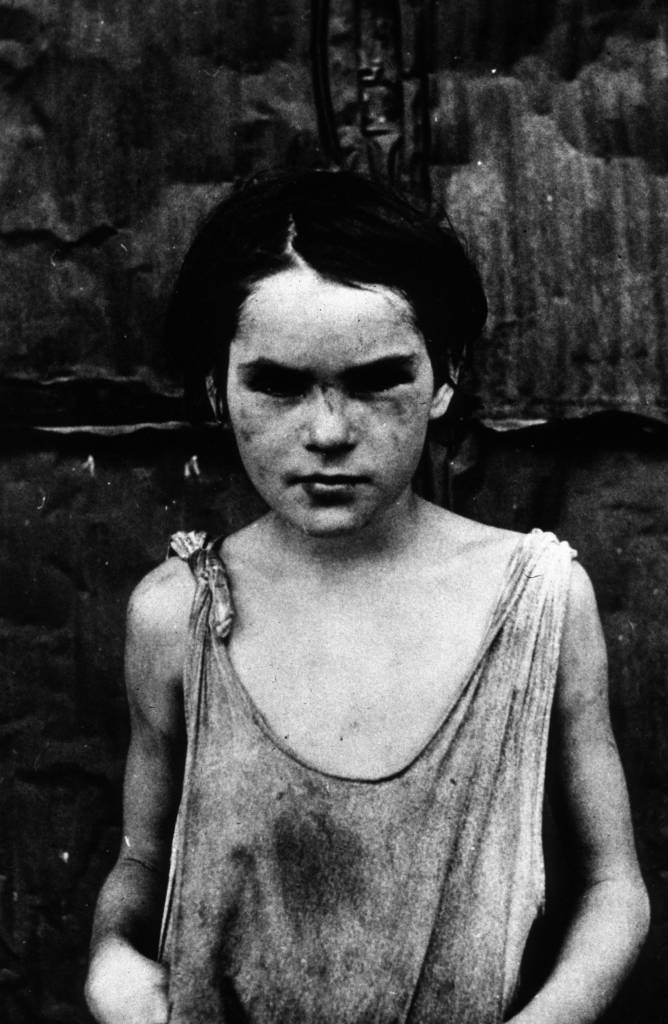
A young girl living in a shack town near Oklahoma City, Oklahoma. 1936 (Photo by Dorothea Lange/Getty Images)
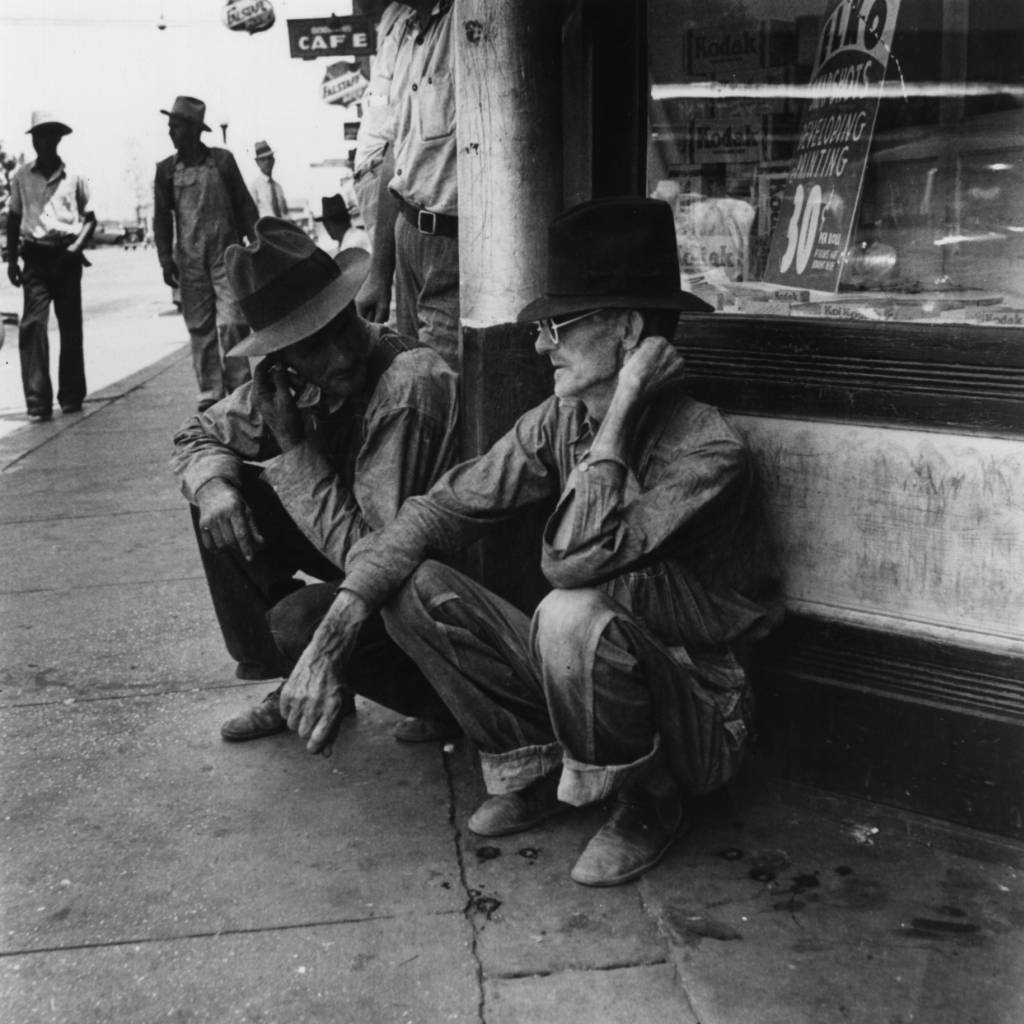
August 1936: Farmers in Oklahoma sitting in the shade while their crops burn in the fields during the Depression. 1936 (Photo by Dorothea Lange/Hulton Archive/Getty Images)
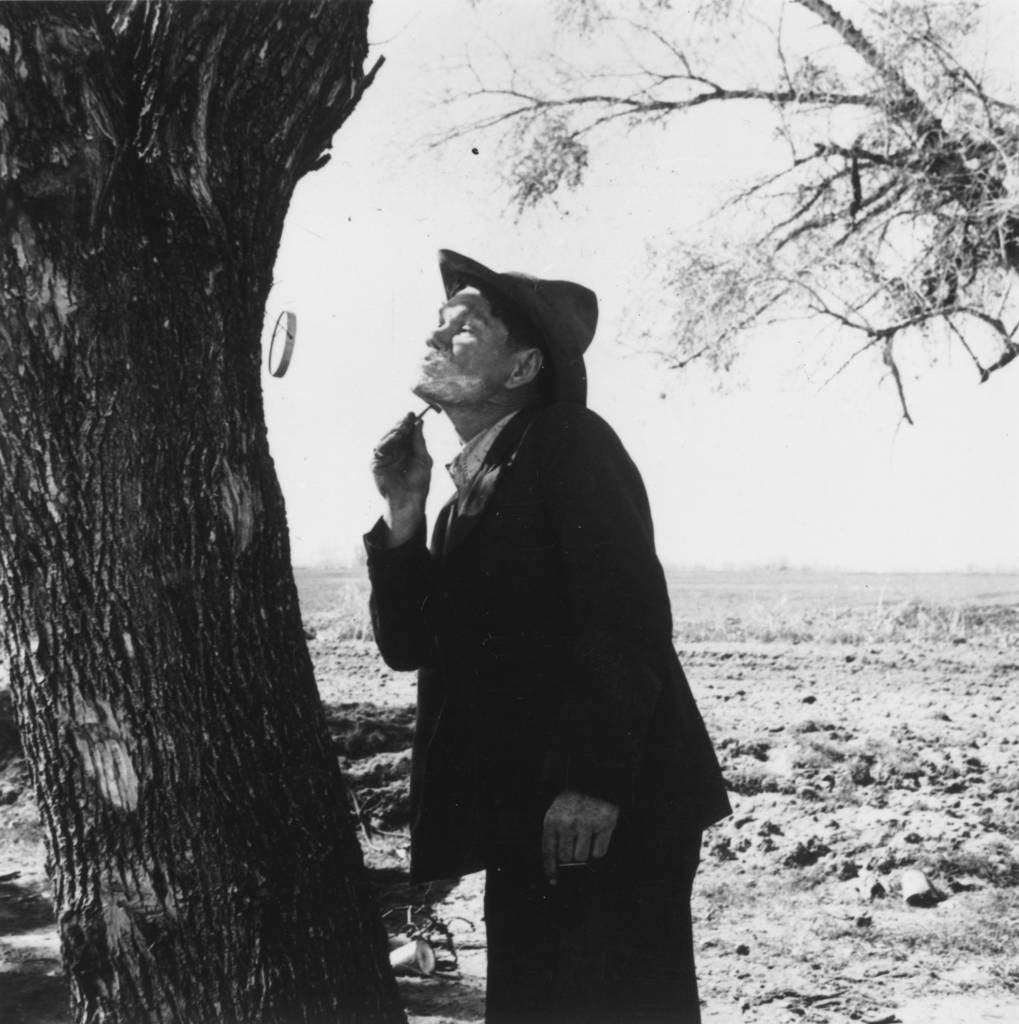
February 1939: A migrant shaving by an American roadside. 1939 (Photo by Dorothea Lange/Hulton Archive/Getty Images)

June 1938: A family in Pittsburg County, Oklahoma is forced to leave their home during the Great Depression, due to a serious drought in the region. (Photo by Dorothea Lange/Keystone/Getty Images)
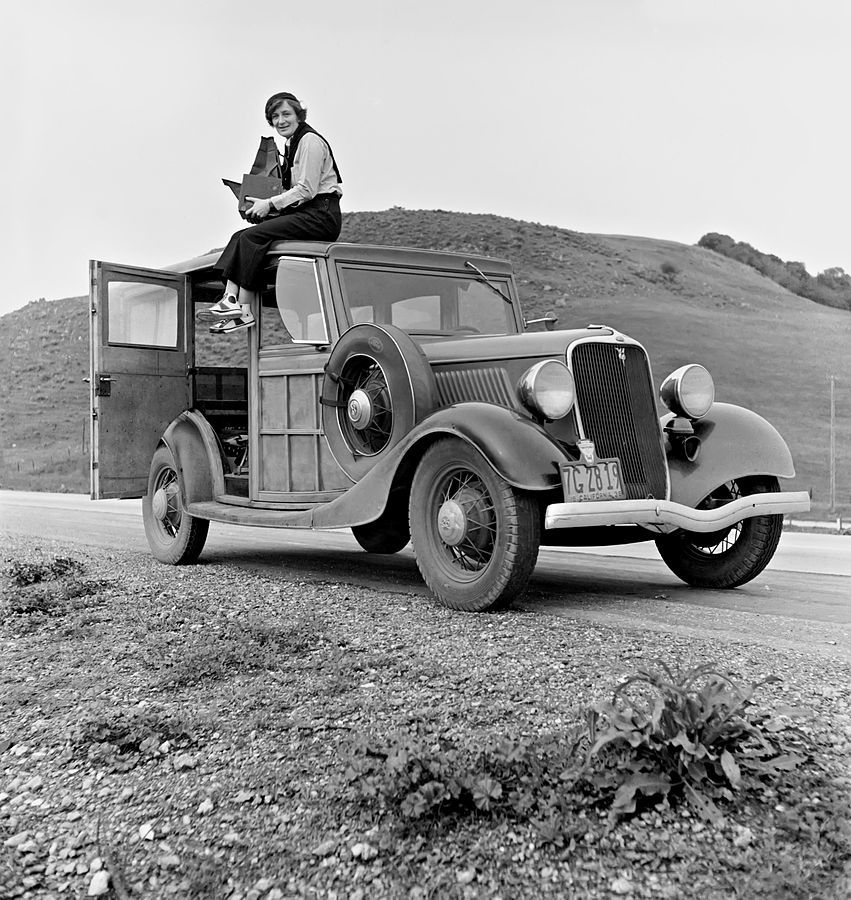
Dorothea Lange atop automobile in California. The car is a 1933 Ford Model C, 4 door Wagon. The camera is a Graflex 5×7 Series D. Lange was a New Deal Resettlement Administration and FSA-OWI photographer.
Would you like to support Flashbak?
Please consider making a donation to our site. We don't want to rely on ads to bring you the best of visual culture. You can also support us by signing up to our Mailing List. And you can also follow us on Facebook, Instagram and Twitter. For great art and culture delivered to your door, visit our shop.
